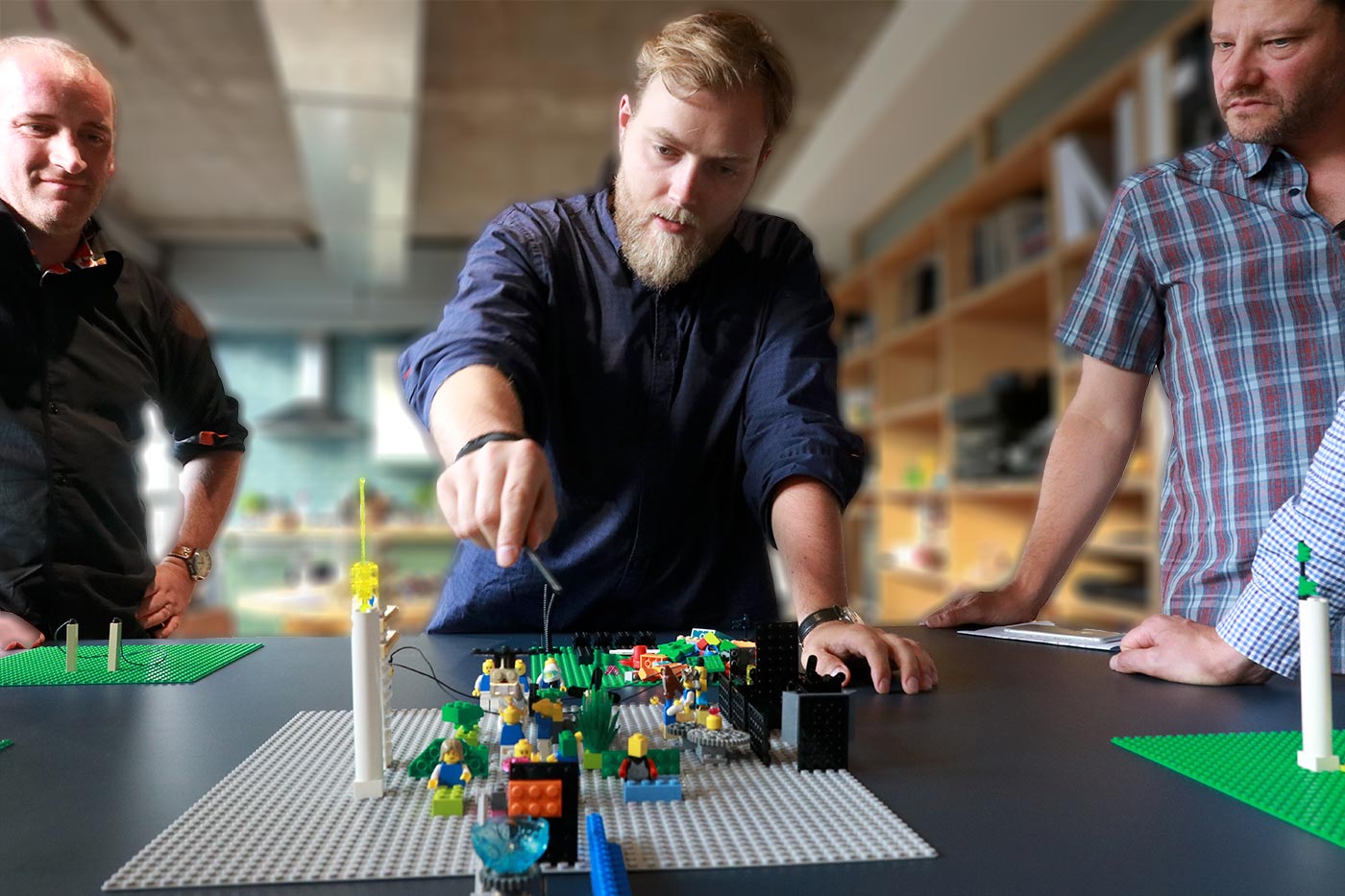



Blog Post by SeriousWork Graduate and ProMet associate Vics Bradley.
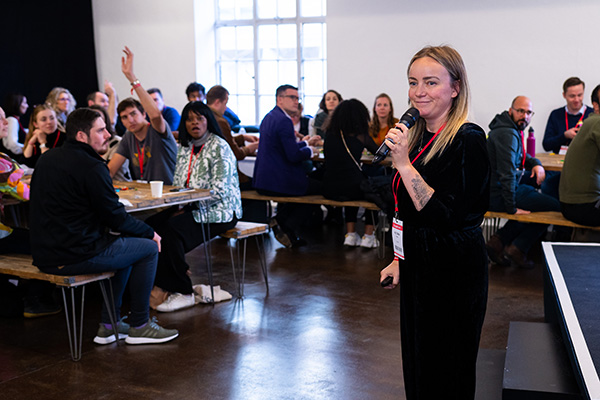
I think most facilitators, like me, feed off of the positive energy of others. That’s why I felt so grateful to be back at a buzzing conference. I was ready to be super charged like a Tesla.
Legal Geek did not disappoint. I found myself in London, surrounded by 2000 attendees from the legal sector for a very unique conference experience. Lots of talking, lots of laughing and a casual but productive buzz in the air. For those unfamiliar, Legal Geek is a tech innovation conference for the legal sector.
I was there representing the ProMeet facilitation team to deliver LEGO Serious Play workshops with a focus on sustainability in the legal sector.
These were short workshops of 45mins that really pushed participants to think and act quickly. I often think that shorter workshops are more challenging than the usual half-day of full-day we are accustomed to.
On the train down to London, I had been watching ‘Better Call Saul’ which felt like a nice coincidence. I was expecting some Howard Hamlin and Chuck McGill style characters… I was very wrong.
Around 120 attendees embarked on a 45min introduction to LEGO Serious Play and an exploration into sustainability in the legal sector. The room was packed with what turned out to be some of wildly creative minds. There was a wave of anticipation, excitement and laughter in the air.
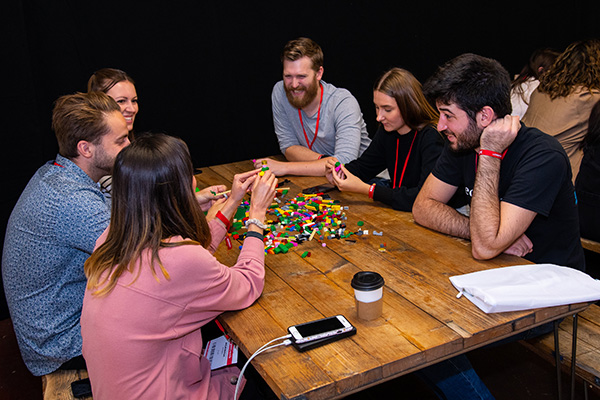
Firstly we completed some warm up builds to familiarise the room with using the bricks and to encourage attendees to embrace their curiosity. After that we were ready to jump into our builds. I asked the attendees to;
“The year is 2032 and you’ve just been crowned ‘The World’s Most Sustainable Legal Firm’. Build a shared model to showcase the ideas your firm implemented to win this title.”
This question was designed to fit one of the conference’s themes of sustainability. It encouraged attendees to consider sustainability impact, and what ideas they could implement now, that could lead to sustainable change.
The shared models were quite fascinating and definitely generated some laughs. Here is a summary of some of the stories that were shared;
Make law completely open source, build better legal transparency and dissolve the need for legal firms all together.
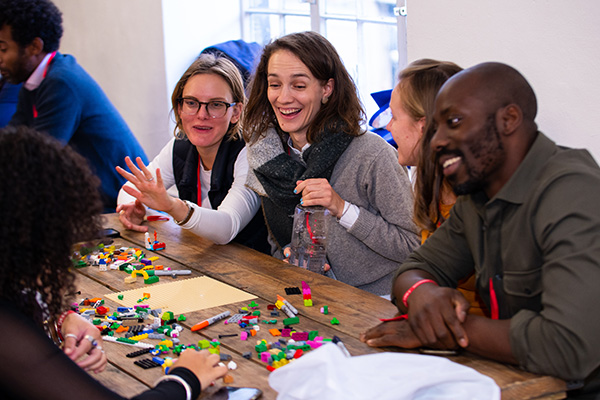
Supporting green startups pro-bono until they grow, replant trees to become carbon negative, generate our own water and electricity.
Have our client’s lead on the design of the services they need so that we support them better.
Use less paper, make lawyers self sustaining, have more women in leadership positions and implement systems for better work-life balance.
And a crowd favourite…
“Every time a lawyer recommends litigation they have to plant four trees.”
The best thing about LEGO Serious Play is the amazing array of outcomes it produces. It’s such a brilliant mix of a creativity and process. It’s a joy to facilitate this kinaesthetic learning style. I always leave with a smile, and with my batteries fully charged.
A (wonderful) graduate story by Liam Isaac - Head of Digital Learning at UWC South East Asia.
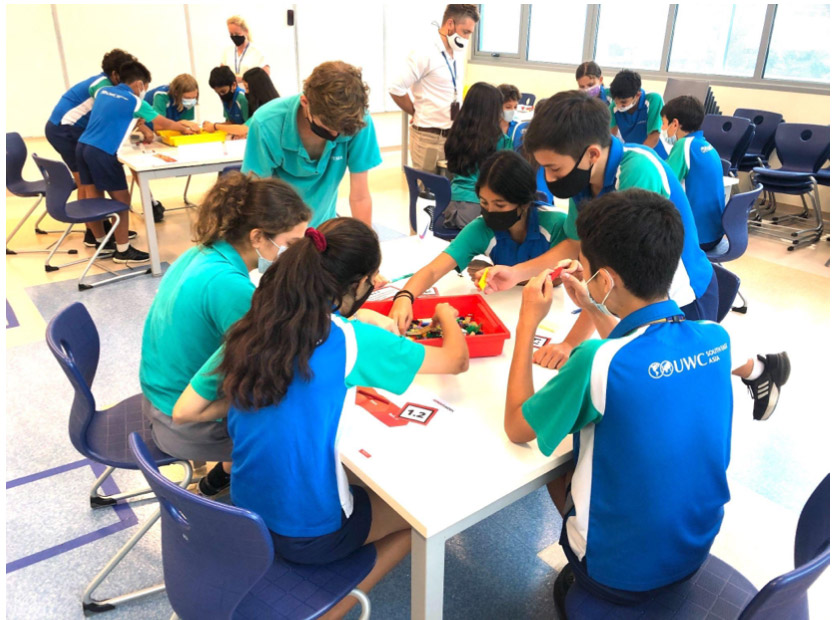
From the moment I heard about LEGO Serious Play, I knew that it was something that I wanted to learn more about and - thanks to a fantastic online course run by Sean Blair - last February, whilst on a ‘cruise to nowhere’, I was lucky enough to complete the LEGO Serious Play Online Build Level 1 and 2 workshop.
Whilst I instantly knew that this method had the potential to be transformative within our secondary school context, I perhaps underestimated just how significant an impact it could have, along with the range of contexts within which it could prove effective.
In one school term alone, we have used LEGO Serious Play to facilitate shared vision building workshops with educator teams, explore our Middle School students’ relationship with Social Media and challenge learners in class to use this process to enhance their learning of key concepts within different subject areas.
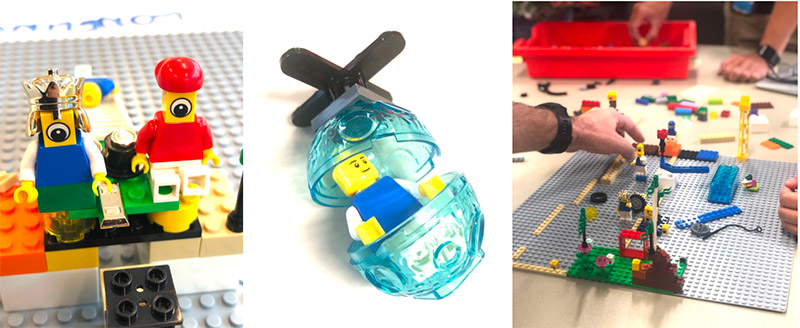
In the coming months, we have plans for how the process can inform our approaches; notably the engagement of our wider-school parent and alumni community as well as formally embedding the process into schemes of work, effectively making LEGO Serious Play a mainstream strategy within the ‘teacher’s toolkit’.
Here are our big takeaways regarding how and why the process has proved successful within our specific school context.
______________________________________________________
What Went Well: Reasons Why LEGO Serious Play Has Proved Successful
It is a democratic process
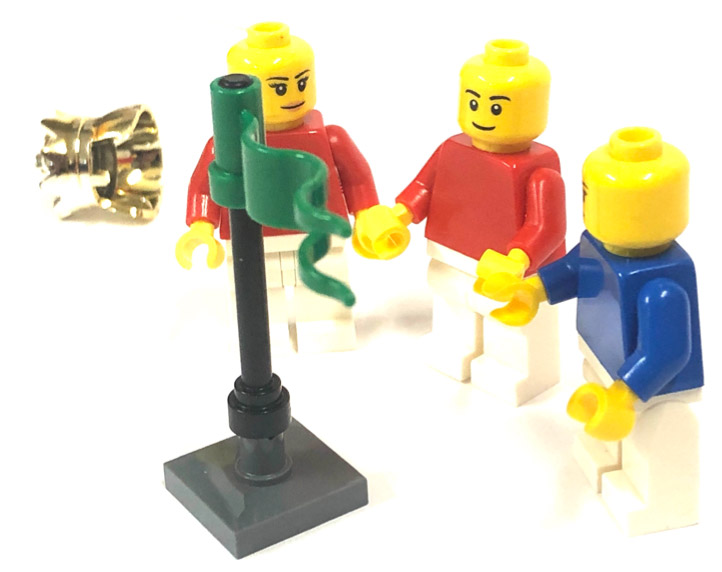
In the context of education, this one is HUGE. As Sean stated during training, in LEGO Serious Play, ‘everybody builds, everybody shares’. This equitable engagement can be very difficult to achieve in a ‘typical’ classroom or meeting environment for a whole host of reasons; established hierarchies, different languages, cultural norms and learning needs, as well as the behavioural chasm between introvert and extrovert personalities to mention just a few.
Regardless of whether participants have been students or staff, the feedback from our sessions have always highlighted the democratic nature of this process as a significant positive. This was perhaps best epitomised by a member of our Outdoor Education team’s administration staff who valued the process as “providing opportunities for all individuals to actively participate”. This was particularly validating as the department’s backroom staff had not always been engaged in the co-creation of department visioning.
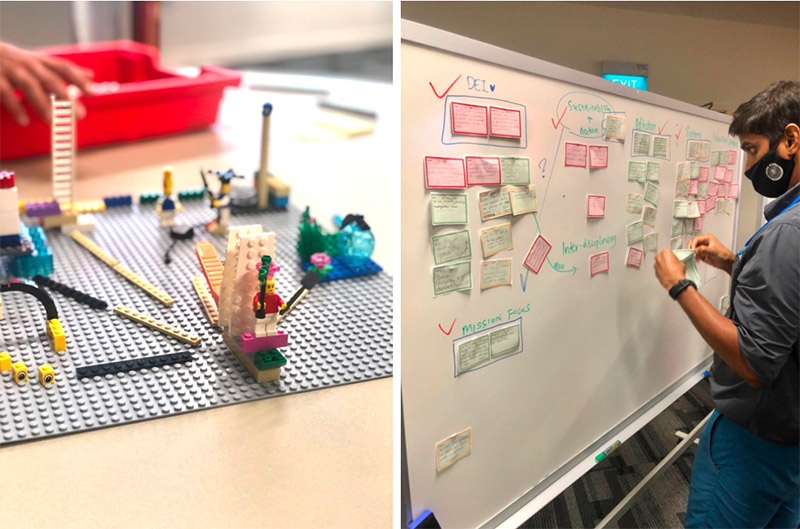
It is a safe space for idea sharing
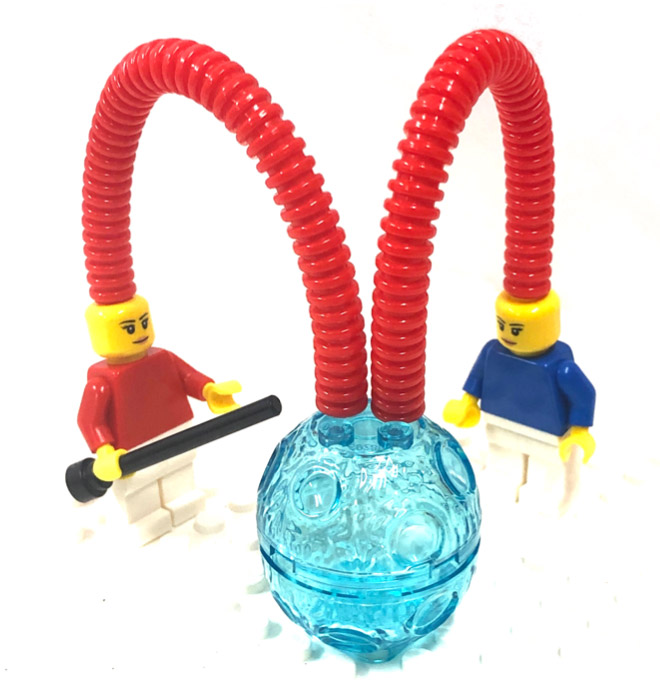
The beauty of communicating through models - in our experience - is that it distances participants from the ideas they are sharing. We have observed that, by allowing the model - rather than the individual - to take centre stage in this manner, participants are less guarded about sharing potentially controversial ideas. This has been particularly powerful for workshops where students have been exploring socially sensitive issues; something that can be incredibly challenging for status-aware teenagers to do; especially when this process is facilitated by very “uncool” authority figures such as their teachers.
For example, in a workshop where Middle School students explored their relationship with Social Media - very much a ‘powder-keg’ issue - participants were able to use their models to frame their own ideas as the views of both themselves and their peers, without worrying that their ideas would directly reflect upon themselves as individuals, offering us, as school leaders, a more authentic less-filtered reflection of how our student-body really felt about social media.
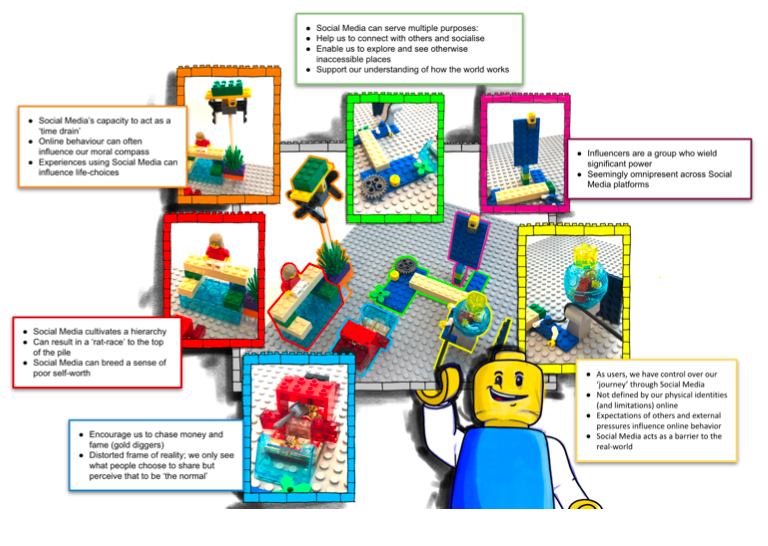
This ‘veil of anonymity’ that LEGO Serious Play offers participants throughout the process is a significant positive case for its’ use within schools.
It promotes tolerance
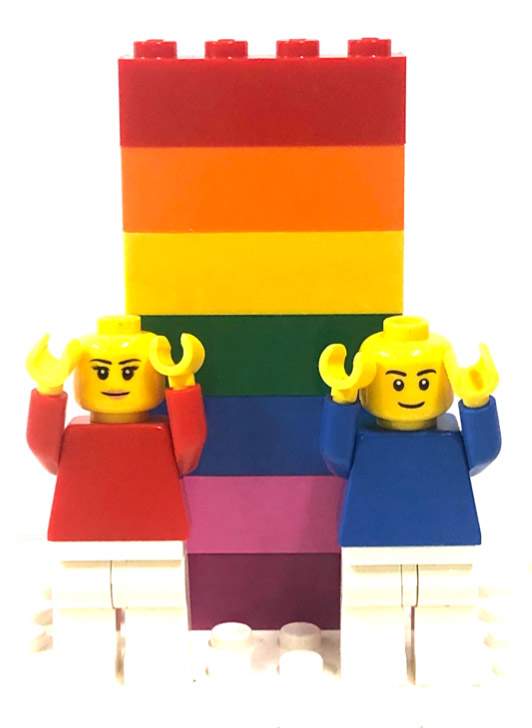
As a large international school, UWCSEA is the proverbial melting pot. With such a diverse student, staff and community population, our school mission makes explicit our aim to ‘use education as a force to unite people, nations and cultures for peace’. A fundamental foundation for peace is tolerance; tolerance for the opinions, beliefs and values of those who do not necessarily share the same opinions, beliefs and values as you.
Having observed how students and staff within our school community behave during the workshops and sessions that we have facilitated, I have become a huge advocate for the extent to which tolerance is inherently built into the LEGO Serious Play process.
The focus on active listening and the need to recap and summarise the ideas of others ensures that participants must truly listen, hear and understand the stories that their peers choose to share. In our educational context, this is not always the case, with students often eager to share their own ideas whilst not fully appreciating those of their peers. This process challenges this default to myopia. As one student put it in her workshop feedback:
“I felt that it made us listen more carefully and through paraphrasing, allowed us to understand each other's thoughts and concepts better”
In our experience, the shared model build is where the processes capacity for fostering tolerance truly comes to the fore. In one student workshop, when it came to constructing their shared response to the build question, not a single student chose one of their own ‘disaggregated parts’ to contribute to the shared build; instead preferring to select elements of their peers’ individual builds.
The significance of this is that, through the process, our students evidenced that they not only heard and appreciated the diversity of ideas that emerged, they validated these different ideas by choosing to contribute these to the group response over their own.
If this is not an outstanding analogy and blueprint for peace, then I do not know what is!
______________________________________________________
Challenges we encountered
These are just some of the reasons why we continue to advocate for the use of LEGO Serious Play within our specific school context, and why we will continue to explore where it can enhance our learning program.
It is also worth acknowledging that, through our exploration, we have experienced challenges when it comes to using this process. In the interests of transparency, here are the major ones that we have faced:
Time: In schools, timetables are constraining at the best of times and, therefore, finding the often extended periods of time required to facilitate powerful and meaningful workshops with students and staff alike has been sometimes difficult
Quality Control: Running workshops with larger student numbers has proved challenging; particularly where facilitator to participant ratios are such that multiple build groups are in play. In particular, it has sometimes proved difficult to impress upon students the significance of recapping where the facilitator has not been ‘at the table’ to explicitly do so.
Focus: Working with children is an amazing experience. They tend to bring considerably less ‘baggage’ to the table than we adults do. The pay off for this enthusiasm is that it can be challenging to maintain focus. As with any learning experience, keeping learners on task, whilst maintaining the levels of creative freedom necessary for the LEGO Serious Play process to be effective has been a balancing act.
Moving forward, we are excited to see the potential positive influence that this process can have upon our school community. Significantly, we would be very excited to share our experiences with other educators to build a professional community and learn from each other's successes and challenges.
Contact Liam via LinkedIn
Note from SeriousWork founder Sean Blair: Liam, thanks so much for sharing your brilliant story, to see such a wide range of uses in such a short time since training is truly impressive. Thank you for attending out online class from Singapore, and working so late into the night to learn these skills you have evidently mastered so well.
This is a (brilliant) guest blog post from SeriousWork graduate Stella Kasdagli, Co-Founder Women On Top
In my SeriousWork two day Online LEGO® SERIOUS PLAY® (LSP) facilitation training course, Sean asked us to facilitate a shared model to show the key benefits of using LEGO Serious Play. Little did I know then how much this model would expand (in my own mind at least) as soon as I started putting the LSP tools in practice, in my own work (and, as you will see, even beyond that).
When our training ended, Sean advised us to start facilitating LSP groups, however small, within a week of our first training. Hearing that, I felt my heart sank. I didn’t feel I had the technical skills to run an online workshop so soon and, due to COVID restrictions, a large in-person working group was out of the question. I almost gave in then to the idea that I would let things slide and resume this amazing work as soon as our circumstances changed.
Thankfully, I already had a very real challenge that needed solving and, as it turned out, LSP was an amazing tool for me to tackle it. My 11-year old daughter had been struggling for some time with motivation and time management issues: she felt pressured to do things she didn’t love doing, she felt that she didn’t have enough free time to devote to leisure, plus, when she did have the time, she couldn’t think of what she really wanted to do with it (this is puberty, for those of you who are lucky enough not to have come across it, as bystanders during your adult lives). Conversation alone hadn’t been very successful in moving this issue in any helpful direction -but could perhaps LEGO do it? I decided to give it not one but two shots.
Ultimately, I wanted to do an LSP values workshop with her, but for that I would need some help from a dear coach friend who happened to be out of town for the weekend (stay tuned for this second part of the experiment). So, I chose to do some individual rich model building with her around the question of :
“What would you do if you had all the free time in the world”
It goes without saying, I would be building along with her. Our first building round offered some great insights (gardening, hanging out with friends and ceiling gazing) and some vague ideas with builds representing “adventures” and “various activities”. So, we decided to go with a second 3-minute building round and then a third, a fourth and a fifth. Every round started with a specific question of “what do you mean by that” and it helped us unpack for her both “adventures” and “activities” but also “art”, “travel” and “sports”. What she ended up with was an amazing building board full of ideas, not only to fill her free time, but honestly, to live her life to the full.

After finishing this first part of the experiment with her, I couldn’t stop thinking about how much richer those LSP benefits seem, now that I have really started seeing other people work with bricks. These benefits are not just for children but looking at my daughter unpacking issues that were hard for her to approach before, made me appreciate this work in a host of other ways. Here’s what I found:
Detachment
Putting our ideas, dreams, feelings into concrete shapes somehow helps us detach ourselves from the responsibility of owning and expressing these thoughts. It is as if we become less critical of our inner selves when we can present them not in our own words but in shapes that are not us anymore.
Storytelling
Sharing your models with other people forces you to create a coherent story -and we know how much stories help us put our chaos in order and make sense of our own selves and the world around us.
Thought
Those few minutes of individual building are like a silent space that we give ourselves to really think before we blurt out whatever we would have blurted out if someone asked us the same question we are building around. By giving ourselves the time to process our ideas we arrive at a much more thought-out conclusion than the one we would have reached if we had just talked about it.
Truth
Because building takes time (more time than talk), we end up building only the things that are important to us and this selection and investment process help us become more truthful around what desires and thoughts are essential to what we want to say/achieve/share.
Practice
Because we are using our body to give shape to our ideas, we end up with an imprint of the thought process we went through on our hands and eyes -to say the least. This is probably the most valuable dimension of every learning process: the chance to leave our learning spaces with a physical sensation of how our new ideas feel when we get them out in the world. And this is something that my daughter is now going to carry with her while she’s navigating the treachery waters of puberty, adolescence and beyond.
*Stay tuned to learn about the results of our values LSP workshop with my pre-teen.
Stella Kasdagli is a writer, facilitator and the co-founder of Women On Top, a non-profit organization working for the professional empowerment of women and for equality and inclusion in the workplace.
We need a more experimental, startup mentality to disrupt our old ways of thinking and doing in today’s business world. The best way to achieve this is to inspire creativity and build a sense of empowerment in our co-workers by bringing more PLAY into our organisations.
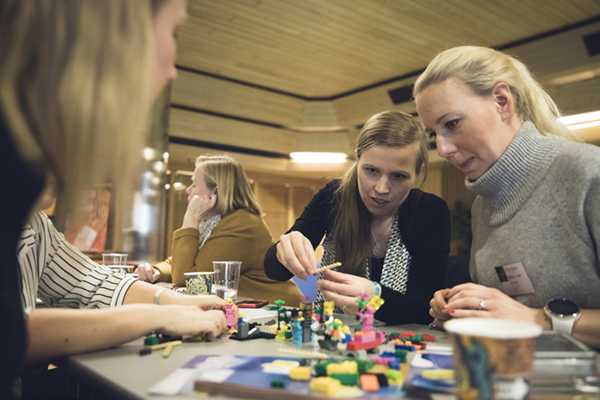
We are all born creative. We don’t grow into creativity, but instead, end up growing out of it. During all of our education, schools teach us convergent thinking, which drains divergent thinking - CREATIVITY - out of us.
“Children have an extraordinary capacity in creativity. If they don’t know, they’ll have a go. They are not frightened to be wrong. That’s not to say being wrong is creativity in itself. But if you’re not prepared to be wrong, you have no capacity to come up with anything original”, as Sir Ken Robinson warns us.
Most adults fear being wrong and making mistakes. Similarly, most companies want to play it safe, or rather they don’t want to play at all. Unfortunately, that’s not enough anymore. We need to re-think our purpose, and whether that purpose is even relevant anymore to our customers and employees.
“All children are born artists.
The problem is to remain an artist as we grow up.”
- Pablo Picasso
The future seems more uncertain than ever, so we all need to seek out that creative five-year-old within us to see positive effects play out. We need PLAY in business to do just that. We need to start looking at things through a playful lens, that lets us think out of the box and gives our brain a hand.
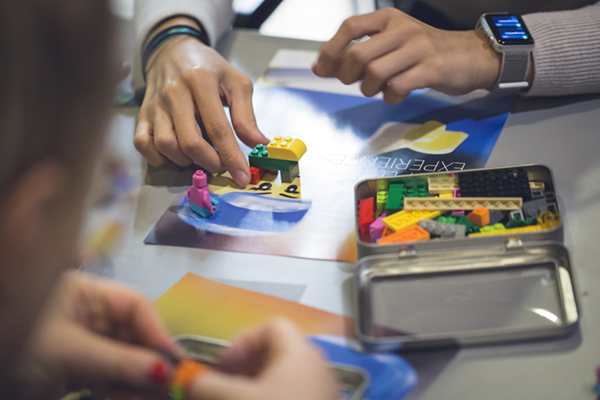
Happy people think about others
Play helps us connect with the people around us, and can bring about a new wave of valuing other people, relationships, and supporting each other in business. It leads to lower levels of stress and healthier and more engaged employees. These are all signs of a forward-looking company.
Play is often associated with happiness, joy and having fun. In a business that has instilled play, people are allowed to experiment, find their “flow” effortlessly, and take creative risks. When it is ok to fail, the whole organisation learns and succeeds faster, propelling business growth, profits, and success.
People need to be HAPPY, so they care about delivering happiness to others. Without happy employees, you cannot have great customer experiences. In a company culture that advocates for play, people feel refreshed and energised, and learning and creativity get a boost. A playful organisation has motivated and committed employees, who are inspired, have fun together and perform better as a team.
Play has an essential role in business, as it puts us in the right mindset and allows us space to think differently - to be CREATIVE. As the need to introduce more creativity in an organisation is vital to its well-being, it’s time to PLAY. Seriously.
Ingrain play into your working habits
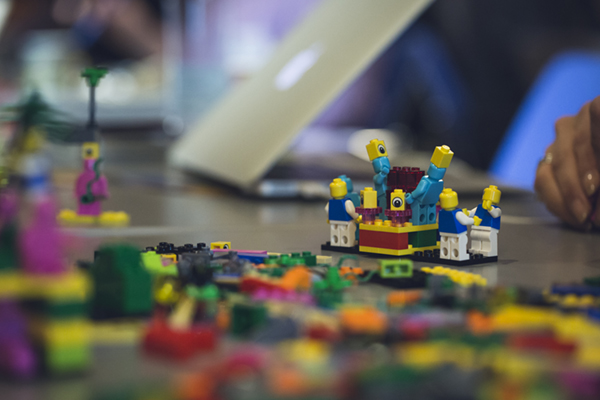
Play is not about external facilities like building a “creative environment” for your employees. Especially now, since almost everything happens online, it should be about the ways of working. So, the only investment you need to make might very well be between your ears.
Enter LEGO® Serious Play® (LSP), a creative methodology, initially created by the LEGO® Group for themselves, and later on open-sourced and applied to many different domains and disciplines. We’ve designed our application (http://www.cxplay.fi) to help understand change and ease transformation in the realm of People Experiences. LSP has also been translated to the online so that attendees can join the sessions from all over the world.
Using LSP, you can imagine a new story for your organisation, brick by brick. Through building your individual models and constructing shared ones, you may start by re-defining your purpose or create the strategy you need to reach that purpose. You can re-imagine new audiences and their customer journeys with your company, as well as do market research studies with existing ones. Just pick your bricks and tell your story.
You can also depict the various agents that affect the future of your organisation. But it doesn’t stop there. You can, together with your team, ideate and evaluate all the different scenarios that your people working in customer-facing roles might encounter. That allows you to create simple guiding principles, which empower everyone to do the right thing. Always.
Become the story you are building
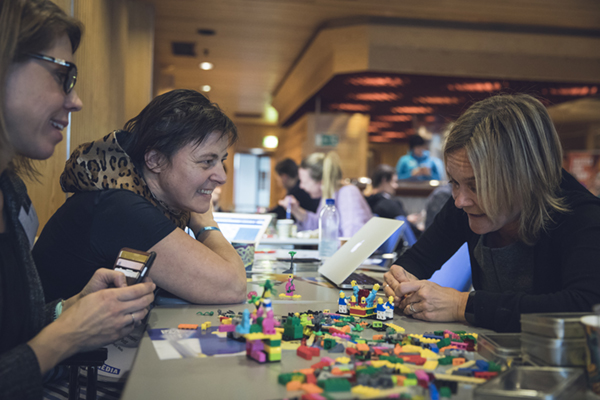
There are numerous ways in which you can benefit in practice from a creative methodology, such as LEGO® Serious Play®. Most importantly, LSP skyrockets the capacity of your organisation to plan and prepare for the future by fast-tracking the discussions you need to have to make these scenarios and decisions possible. It lets you literally play all of them out before they happen.
The playful atmosphere in LSP workshops creates a sense of safety - an environment where everyone feels comfortable to share their experiences and innermost thoughts. It also provides an energising context for you to co-create and bring to life People Experiences, together with your colleagues and customers.
And just like kids become part of their story, instead of just telling that story to you, your co-creators internalise the shared ideas when they play. They learn and remember better, and implementing these experiences becomes much simpler and quicker as everyone has already invested themselves in the concepts discussed.
LSP is a serious tool for facilitating change. It reignites our innate creativity and directs the artist within us to create wonderful, new masterpieces to ensure our sustainable business growth also in the future. So...are you ready to find that five-year-old within yourself? Get ready, get serious, PLAY!
- - -
This blog post is republished with permission from Shirute Ltd. It has been originally posted at https://www.shirute.fi/en/blogs/all-children-are-born-artists.
Sirte Pihlaja (Certified Customer Experience Professional, LEGO® Serious Play® Trained Facilitator) is the CEO of Shirute, the first customer experience agency in Finland. She heads the activities of the global Customer Experience Professionals Association (CXPA) in Finland. An internationally known CX/EX expert, coach, designer and strategist, she has over 25 years of experience in advising large international corporations and brands in different industries. Sirte is known for translating customer understanding to concrete actions and results in a fast and cost-efficient way. She is especially fond of creative methodologies and regularly plays with LEGO bricks together with her clients.
Sirte recently wrote about LEGO® Serious Play® in her globally best-selling book Customer Experience 2, co-authored by 24 highly experienced international CX professionals (http://bit.ly/cx2book).
The blog post below was written by SeriousWork graduate Dr Rebekah Wilson who works at Exeter University. Rebekah first published this post on the Exeter University Incubator website and we are grateful for her permission to re-post it here.

The Education Incubator Serious Fun, Serious Play, Serious Skills project awarded six bursaries to support Lego Serious Play Facilitation Training across the University of Exeter. In this blog, one of the bursary recipients, Dr Rebekah Welton shares her journey.

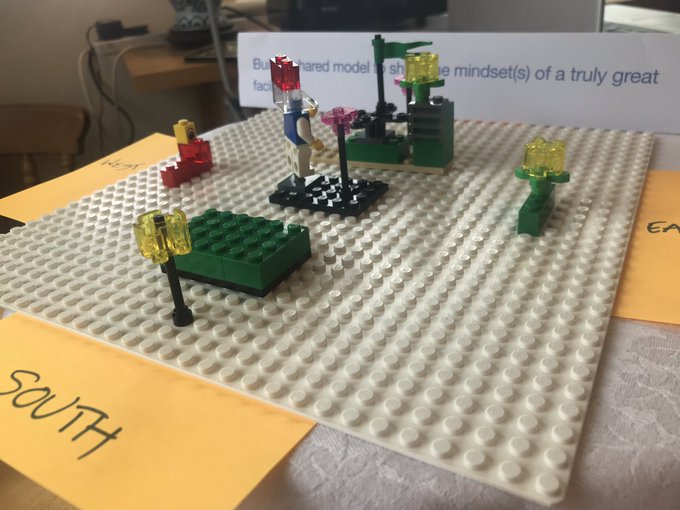
NOTE: Thanks for letting us share your write up Rebekah. We should also note that without the pioneering work being done by Dr Holly Henderson at Exeter University expanding the use of LEGO Serious Play at Exeter University would not be happening!